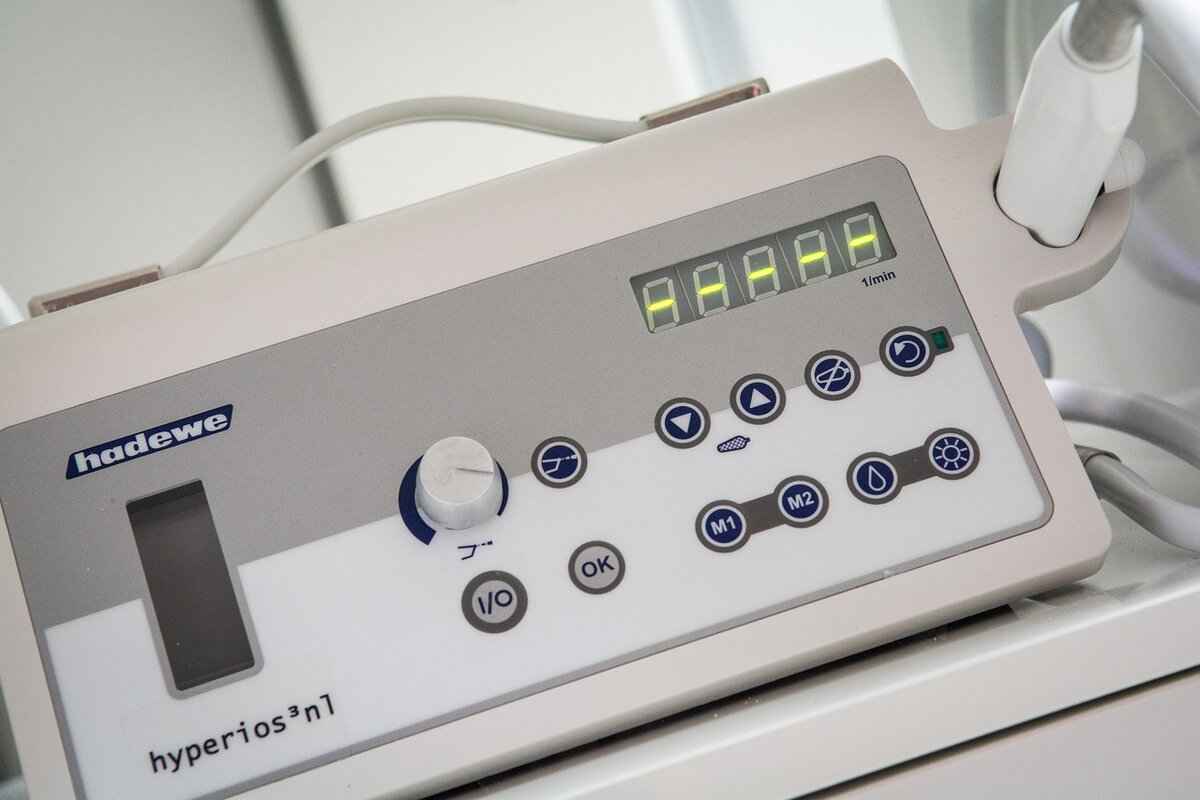Slip dresses are a staple in many wardrobes due to their versatility and elegance. However, caring for these delicate garments requires a nuanced approach to ensure they remain in top condition. In this article, we will explore the intricacies of caring for slip dresses, including washing methods, fabric considerations, and expert tips to keep your garments looking pristine.
A slip dress is a lightweight garment, often made from luxurious materials like silk or satin. Originally designed as undergarments, they have evolved into fashionable standalone pieces suitable for various occasions. Understanding the intricacies of their design is crucial for proper care.
Different fabrics require distinct washing methods. Knowing the material of your slip dress can help you choose the right cleaning approach, ensuring longevity and maintaining its aesthetic appeal. Below are some common fabric types:
- Silk: Luxurious but delicate, requiring gentle handling.
- Satin: Smooth and shiny but can be prone to snags.
- Polyester: More durable and often easier to care for.
While it is possible to machine wash a slip dress, caution is essential. Understanding the right settings and precautions can help prevent damage during the washing process.
Selecting the appropriate machine settings is vital. A gentle cycle with cold water is often recommended to protect the fabric and maintain the dress’s shape. Always check the care label for specific instructions.
Placing your slip dress in a mesh garment bag can provide additional protection during the wash cycle. This method reduces friction and helps prevent snagging on other items in the machine.
Hand washing is a gentle alternative to machine washing. It allows for more control over the cleaning process, making it ideal for delicate slip dresses.
1. Fill a basin with lukewarm water.2. Add a mild detergent suitable for delicate fabrics.3. Gently agitate the water to create suds.4. Submerge the dress and gently swish it around.5. Rinse thoroughly with cool water to remove soap residue.
After washing, drying methods are critical. Air drying is often recommended to prevent shrinkage and maintain the dress’s shape. Avoid machine drying, as it can cause irreversible damage.
Stain removal requires careful attention, especially on delicate fabrics. Knowing how to treat stains effectively can save your slip dress from permanent damage.
Acting quickly is key to successful stain removal. Blot the stain gently with a clean cloth and use a mild stain remover suitable for the fabric type.
For tough stains or valuable slip dresses, consider professional cleaning services. Experts can provide specialized care to ensure your garment is treated without risk of damage.
Proper storage can prolong the life of your slip dress. Understanding the best practices can help maintain its shape and fabric integrity when not in use.
Hanging your slip dress on a padded hanger can prevent creases, while folding may be necessary for storage in limited spaces. Choose the method that best suits your storage conditions.
Exposure to sunlight can fade colors and weaken fabrics. Store your slip dress in a cool, dark place to maintain its vibrancy and structural integrity over time.

What Is a Slip Dress?
A slip dress is an elegant and versatile garment that has gained popularity for its ability to transition seamlessly from casual to formal occasions. Typically made from luxurious materials such as silk or satin, this lightweight dress is designed to be worn either as an undergarment or as a standalone piece. Its simple yet chic design makes it a staple in many wardrobes, allowing for endless styling possibilities.
The slip dress offers a unique blend of comfort and style. Its minimalist silhouette flatters a variety of body types, making it a go-to choice for many fashion enthusiasts. Here are some reasons why you might want to add a slip dress to your collection:
- Layering Potential: Slip dresses can be layered over turtlenecks or under blazers, providing a chic look for multiple seasons.
- Easy to Dress Up or Down: Pair with sneakers for a casual outing or with heels for a night out.
- Variety of Styles: Available in various lengths, colors, and patterns, slip dresses cater to diverse fashion tastes.
When considering a slip dress, it’s essential to understand the fabric types, as they significantly affect the garment’s care and longevity. Here are the most common materials:
Silk slip dresses are known for their luxurious feel and beautiful drape. However, they require gentle care. Silk can be sensitive to heat and harsh detergents, so it’s crucial to follow specific washing instructions to maintain its luster and prevent damage.
Satin and polyester slip dresses are often more durable than their silk counterparts. They can withstand more rigorous washing methods but still benefit from careful handling to keep their colors vibrant and textures intact.
Caring for your slip dress is vital to ensuring its longevity and maintaining its aesthetic appeal. Here are some key points to consider:
While machine washing is possible, it requires caution. Use a gentle cycle with cold water and always check the care label. A mesh garment bag can provide additional protection, reducing friction with other garments.
For the most delicate fabrics, hand washing is often the best approach. Use lukewarm water and a mild detergent, gently agitating the fabric to remove dirt without causing harm. Rinse thoroughly to ensure no soap residue remains.
Stains can be particularly troublesome on slip dresses due to their delicate fabrics. Here are some effective strategies:
Act quickly! Blot the stain with a clean cloth and avoid rubbing, which can spread the stain. Use a mild stain remover suitable for the fabric type.
For stubborn stains or high-value dresses, consider professional cleaning services. Experts can handle delicate fabrics with the care they need.
Proper storage is essential for maintaining the shape and integrity of your slip dress. Here are some tips:
Use a padded hanger to prevent creases and maintain the dress’s shape. If space is limited, carefully fold the dress, ensuring it doesn’t get crushed.
Store your slip dress in a cool, dark place to prevent fading and fabric weakening due to sunlight exposure.
By following these guidelines and understanding the nature of your slip dress, you can ensure that this versatile piece remains a cherished part of your wardrobe for years to come.

Why Is Fabric Type Important?
When it comes to caring for your slip dress, understanding the significance of fabric type cannot be overstated. The material of your slip dress not only influences its appearance but also dictates the appropriate washing methods and care techniques needed to maintain its beauty and longevity. Here, we delve into why knowing your fabric type is essential for preserving your slip dress.
Different fabrics have unique properties that require tailored washing approaches. For instance, silk and satin are luxurious but delicate materials that can easily suffer from damage if not treated properly. On the other hand, polyester and cotton blends tend to be more resilient but still require specific care to keep them looking their best.
- Delicate Nature: Silk is known for its softness and sheen, making it a popular choice for slip dresses. However, it is also prone to shrinking and color fading if washed incorrectly.
- Washing Recommendations: It is advisable to hand wash silk in cold water using a gentle detergent or opt for professional dry cleaning to avoid any mishaps.
- Durable Yet Sensitive: Satin, often made from polyester, offers a shiny finish and is more durable than silk. However, it still requires careful handling to avoid snagging or color bleeding.
- Washing Guidelines: Machine washing on a gentle cycle with cold water is typically acceptable, but always check the care label for specific instructions.
Fabric composition can also affect how a slip dress reacts to water and detergents. For example, natural fibers like cotton and silk tend to absorb water more readily than synthetic fibers, which can lead to different care requirements.
- Absorbency: Natural fibers might require extra rinsing to remove soap residue, while synthetic fibers may dry faster.
- Color Retention: Knowing whether your dress is made from natural or synthetic fabrics can help you choose the right detergent to prevent fading.
Understanding fabric type is crucial when deciding between machine washing and hand washing. Each method has its benefits and drawbacks depending on the material:
- Machine Washing: Suitable for more durable fabrics like polyester. Always use a gentle cycle and cold water, and consider placing the dress in a garment bag for added protection.
- Hand Washing: Ideal for delicate fabrics like silk. Gently agitate the fabric in lukewarm water with a mild detergent to avoid damage.
In conclusion, knowing the fabric type of your slip dress is essential for choosing the right washing methods and ensuring its longevity. By understanding the specific needs of each fabric, you can maintain the aesthetic appeal and structural integrity of your slip dress for years to come. Whether you opt for machine washing or hand washing, being informed will help you make the best decisions for your beloved garment.
Silk Slip Dresses
are renowned for their luxurious feel and elegant drape, making them a staple in many wardrobes. However, their delicate nature requires careful handling to maintain their beauty and longevity. Understanding how to properly care for these garments is essential to avoid issues such as shrinking, loss of sheen, and other forms of damage that can occur if they are washed incorrectly.
Silk is a natural protein fiber that is prized for its softness and sheen. However, it is also vulnerable to various factors that can compromise its integrity. When caring for silk slip dresses, it is crucial to recognize the following:
- Temperature Sensitivity: Silk is sensitive to heat, which can cause it to shrink or become misshapen.
- Water Solubility: Certain detergents can damage silk fibers, leading to discoloration or weakening of the fabric.
- Mechanical Action: Excessive agitation during washing can cause fraying or tearing.
While it may be tempting to toss your silk slip dress into the washing machine, caution is advised. Here are some essential tips:
- Machine Washing: If you choose to machine wash, use a gentle cycle and cold water. Always place the dress in a mesh garment bag to minimize friction and protect the fabric.
- Hand Washing: This method is often safer for silk. Use lukewarm water and a mild detergent, gently agitating the fabric to remove dirt. Rinse thoroughly to ensure no soap residue remains.
After washing, how you dry your silk slip dress is equally important. Here are some recommended practices:
- Air Drying: Always opt for air drying over machine drying. Lay the dress flat on a clean, dry towel or hang it on a padded hanger away from direct sunlight to maintain its shape and color.
- Avoiding Heat: Never wring out silk or expose it to high heat as this can cause irreversible damage.
Stains on silk can be particularly challenging to remove without causing damage. Here’s how to handle them:
- Immediate Action: Blot the stain gently with a clean, dry cloth to absorb excess liquid. Avoid rubbing, as this can spread the stain.
- Using the Right Products: Apply a mild stain remover specifically designed for silk. Always perform a patch test on an inconspicuous area first.
Proper storage is vital for maintaining the appearance of your silk slip dress. Consider these tips:
- Hanging vs. Folding: Use a padded hanger to prevent creases. If space is limited, fold the dress carefully, placing tissue paper between layers to avoid crushing the fabric.
- Protecting from Light: Store your dress in a cool, dark place to prevent fading and deterioration from sunlight exposure.
In summary, silk slip dresses are beautiful additions to any wardrobe, but they require careful attention to maintain their luxurious appearance. By following these guidelines for washing, drying, stain removal, and storage, you can ensure that your silk slip dress remains a cherished piece for years to come.
Satin and Polyester Slip Dresses
When it comes to fashion, satin and polyester slip dresses stand out for their elegance and versatility. These garments not only offer a chic silhouette but also provide durability, making them a popular choice for many occasions. However, to maintain their beauty and longevity, it’s essential to understand the proper care techniques.
Satin is known for its luxurious feel and glossy finish, while polyester offers excellent durability and resistance to wrinkles. Both fabrics are relatively easy to care for compared to delicate materials like silk. Nevertheless, they still require specific washing techniques to preserve their texture and color vibrancy over time.
To keep your slip dress looking its best, follow these washing guidelines:
- Machine Washing: If you choose to machine wash your slip dress, always use a gentle cycle with cold water. This helps to prevent any damage to the fabric.
- Garment Bag: Placing your dress in a mesh garment bag can provide an extra layer of protection, reducing friction and preventing snagging during the wash cycle.
- Detergent Choice: Opt for a mild detergent that is free from harsh chemicals. This will help maintain the fabric’s integrity while effectively cleaning it.
For those who prefer a more hands-on approach, hand washing is an excellent alternative. Here’s how:
1. Fill a basin with lukewarm water.2. Add a small amount of mild detergent.3. Submerge the dress and gently agitate the water.4. Rinse thoroughly with cool water to remove all soap residue.
After washing, the drying process is crucial. Here are some effective techniques:
- Air Drying: Always opt for air drying by laying the dress flat on a clean, dry towel. Avoid hanging it, as this can stretch the fabric.
- Avoiding Heat: Never use a dryer, as the heat can cause irreversible damage to the delicate fibers.
Accidents happen, and knowing how to treat stains is vital:
- Immediate Action: Blot the stain gently with a clean cloth to absorb excess liquid. Avoid rubbing, as this can spread the stain.
- Stain Remover: Use a mild stain remover specifically designed for delicate fabrics. Always test on an inconspicuous area first.
Proper storage can significantly extend the life of your satin and polyester slip dresses:
- Hanging: Use padded hangers to maintain the shape and prevent creases.
- Folding: If space is limited, fold your dress carefully and store it in a cool, dark place to protect it from sunlight, which can fade colors.
In summary, satin and polyester slip dresses are not only stylish but also durable when cared for properly. By following these washing, drying, and storage tips, you can ensure that your slip dress remains a staple in your wardrobe for years to come. Remember, taking the time to care for your garments will preserve their beauty and functionality, allowing you to enjoy them for many occasions.

Can You Machine Wash a Slip Dress?
This question often arises among fashion enthusiasts who want to keep their garments looking fresh and new. Slip dresses, known for their elegant silhouette and versatility, are a staple in many wardrobes. However, their delicate nature requires careful handling, especially when it comes to washing. In this article, we will explore the intricacies of machine washing slip dresses, including essential tips and best practices to ensure your favorite pieces remain in pristine condition.
A slip dress is typically made from materials like silk, satin, or polyester, each with its own washing requirements. Understanding the fabric type is crucial for proper care. For instance, silk is luxurious but can easily be damaged by harsh washing methods. On the other hand, polyester slip dresses are more durable but still require gentle treatment.
Yes, you can machine wash a slip dress, but caution is essential. To prevent damage such as stretching, fading, or tearing, follow these guidelines:
- Choose the Right Settings: Always opt for a gentle cycle with cold water. This helps to protect the fabric and maintain the dress’s shape.
- Use a Garment Bag: Placing your slip dress in a mesh garment bag can significantly reduce friction and prevent snagging on other items in the wash.
- Limit the Load: Washing your slip dress alone or with similar lightweight items can minimize the risk of damage.
If you’re particularly concerned about damaging your slip dress, hand washing is a safe alternative. This method allows for greater control over the cleaning process:
Steps for Hand Washing a Slip Dress:1. Fill a basin with lukewarm water and add a small amount of mild detergent.2. Submerge the dress and gently agitate the water to release dirt.3. Rinse thoroughly with cool water to remove soap residue.4. Lay flat on a clean towel to absorb excess water before air drying.
How you dry your slip dress is just as important as how you wash it. Air drying is highly recommended to prevent shrinkage and maintain the dress’s shape. Avoid using a dryer, as the heat can cause irreversible damage.
Stains can be particularly daunting on delicate fabrics. Immediate action is crucial for successful stain removal:
- Blot, Don’t Rub: Gently blot the stain with a clean cloth to absorb excess liquid without spreading it further.
- Use a Fabric-Safe Stain Remover: Apply a mild stain remover suitable for the fabric type and follow the instructions carefully.
For valuable or heavily stained slip dresses, consider professional cleaning services. Experts can provide specialized care to ensure your garment is treated without risk of damage.
Proper storage can prolong the life of your slip dress. Here are some tips:
- Hanging vs. Folding: Use padded hangers to prevent creases, but if space is limited, carefully fold the dress and store it in a cool, dark place.
- Avoid Sunlight: Exposure to sunlight can fade colors and weaken fabrics, so ensure your dress is stored away from direct light.
By following these guidelines, you can confidently machine wash your slip dress while keeping it looking beautiful and stylish for years to come.
Choosing the Right Machine Settings
When it comes to caring for your slip dress, understanding the intricacies of washing is essential. can significantly impact the longevity and appearance of your garment. Here’s a deeper look into how to effectively machine wash your slip dress while preserving its quality.
The slip dress, often made from delicate materials like silk or satin, requires special attention during washing. Using the correct machine settings can help prevent damage such as stretching, fading, or pilling. A gentle cycle with cold water is often recommended, as it minimizes agitation and reduces the risk of harm to the fabric.
- Cycle Type: Always opt for a gentle cycle. This setting uses slower spin speeds and shorter wash times, ensuring your slip dress remains intact.
- Water Temperature: Cold water is your best friend. It helps maintain the color and prevents the fabric from shrinking.
- Spin Speed: Use a low spin speed to reduce stress on the fabric. High speeds can cause stretching and distortion.
In addition to selecting the right settings, consider these practical tips:
- Use a Garment Bag: Placing your slip dress in a mesh garment bag can provide an extra layer of protection. This minimizes friction against other items in the wash and helps prevent snagging.
- Detergent Choice: Always choose a mild detergent that is free of harsh chemicals. Look for products specifically designed for delicate fabrics to ensure your slip dress stays vibrant.
- Pre-Treat Stains: If there are any stains, treat them before washing. Use a gentle stain remover that is safe for the fabric type.
To further ensure the safety of your slip dress during washing, avoid the following:
- High Temperatures: Never use hot water, as it can lead to shrinkage and fading.
- Bleach: Avoid bleach or any harsh chemicals that can damage the fabric.
- Overloading the Washer: Ensure there is enough space in the washing machine. Overloading can cause excessive friction and damage.
Once your slip dress is washed, how you dry it is just as important. Here are some recommended practices:
- Air Drying: Always opt for air drying by laying the dress flat on a clean, dry towel or hanging it up. This prevents shrinkage and maintains the dress’s shape.
- Avoiding Direct Sunlight: Keep your dress out of direct sunlight while drying to prevent color fading.
- Ironing: If necessary, use a low heat setting on your iron. A cloth barrier can also help protect the fabric.
By following these guidelines for and caring for your slip dress, you can ensure its beauty and longevity. Remember, taking the time to wash and dry your garment properly is an investment in your wardrobe.
Using a Garment Bag
is a simple yet effective way to enhance the care of your slip dress during washing. When it comes to maintaining the beauty and longevity of delicate fabrics, such as silk or satin, taking extra precautions is essential. A mesh garment bag serves as a protective barrier, ensuring that your slip dress remains safe from the rigors of the washing machine.
One of the primary benefits of using a garment bag is that it reduces friction between your slip dress and other items in the wash. This is particularly important because friction can lead to fabric wear and tear, causing pilling or even snagging. By placing your slip dress in a mesh bag, you create a gentle environment that minimizes direct contact with other garments, thus preserving the integrity of the fabric.
Additionally, a mesh garment bag helps prevent snagging on zippers, buttons, or other embellishments that may be present on other clothing items. This is crucial for slip dresses, which often feature delicate designs that can easily get caught and damaged. The bag acts as a shield, allowing your dress to move freely while keeping it protected from potential hazards.
When selecting a garment bag, opt for one that is appropriately sized for your slip dress. A bag that is too small may compress the dress, while one that is too large may not provide adequate protection. Look for bags made from breathable materials, as this will allow water and detergent to circulate effectively during the wash cycle.
Moreover, using a garment bag can contribute to the overall cleanliness of your slip dress. It keeps the dress contained, reducing the likelihood of it picking up lint or debris from other items in the wash. This is especially beneficial if you frequently wash your slip dress with heavier fabrics, which may shed fibers.
In conclusion, incorporating a mesh garment bag into your washing routine for your slip dress is a wise decision that offers multiple advantages. It not only safeguards your garment from damage but also enhances the washing process, ensuring that your slip dress remains as stunning as the day you bought it. Remember, taking these small steps can make a significant difference in the longevity and appearance of your cherished slip dress.

What About Hand Washing?
When it comes to caring for your slip dress, hand washing is a method that stands out for its gentleness and precision. Unlike machine washing, which can be harsh on delicate fabrics, hand washing allows you to exert more control over the cleaning process. This is particularly beneficial for garments like slip dresses, often made from fabrics such as silk or satin that require special attention.
Hand washing is ideal for delicate items because it minimizes the risk of damage. The gentle agitation of hand washing helps to maintain the fabric’s integrity and shine while effectively removing dirt and stains. Additionally, it allows you to pay close attention to specific areas that may need extra care, ensuring a thorough clean without compromising the garment’s quality.
- Gather Your Supplies: You will need lukewarm water, a mild detergent specifically designed for delicate fabrics, and a clean basin or sink.
- Prepare the Water: Fill the basin with lukewarm water. Avoid hot water, as it can lead to shrinking and damage.
- Add Detergent: Mix in a small amount of the mild detergent, ensuring it dissolves completely before introducing the dress.
- Submerge the Dress: Gently place your slip dress into the water, ensuring it is fully submerged. Avoid twisting or wringing the fabric, as this can cause distortion.
- Gently Agitate: Use your hands to lightly agitate the dress in the water. Focus on areas that may have stains or dirt buildup.
- Rinse Thoroughly: After washing, carefully remove the dress and rinse it under cool, running water until all soap is gone. This step is crucial to prevent any detergent residue from damaging the fabric.
After washing, the way you dry your slip dress can significantly impact its longevity. Here are some effective methods:
- Air Drying: Lay the slip dress flat on a clean, dry towel to absorb excess water. Then, hang it to air dry away from direct sunlight to prevent fading and fabric damage.
- Avoid Machine Drying: Never use a dryer for slip dresses, as the heat can cause irreparable damage, including shrinking and loss of shape.
While hand washing is a gentle method, there are some common mistakes to avoid:
- Using Hot Water: Always stick to lukewarm or cool water to protect the fabric.
- Rubbing or Scrubbing: Avoid aggressive cleaning techniques. Gentle handling is key.
- Using Harsh Detergents: Choose a detergent specifically formulated for delicate fabrics to avoid damaging the fibers.
To keep your slip dress looking its best, consider the following:
- Store Properly: Hang your dress on a padded hanger or store it flat to prevent creases and maintain its shape.
- Regular Care: Hand wash your dress after every few wears, especially if it has been exposed to sweat or perfume, to keep it fresh.
- Check for Stains Promptly: If you notice any stains, treat them immediately to prevent them from setting.
In summary, hand washing is a superior method for caring for slip dresses, offering a gentle touch that machine washing cannot provide. By following the outlined steps and tips, you can ensure your slip dress remains in pristine condition for years to come.
Steps for Hand Washing a Slip Dress
Hand washing a slip dress is an excellent way to ensure its longevity and maintain its delicate fabric. This method is particularly beneficial for garments made from luxurious materials such as silk or satin, which require gentle care. Below are the essential steps to effectively hand wash your slip dress, ensuring it remains in pristine condition.
Hand washing is often recommended for delicate fabrics because it allows for greater control over the cleaning process. Unlike machine washing, which can be harsh and cause damage, hand washing minimizes the risk of snagging and shrinkage. This method is especially important for slip dresses, which may lose their shape or sheen if not cared for properly.
- Lukewarm water – Ideal for dissolving detergent without damaging the fabric.
- Mild detergent – Choose a gentle formula specifically designed for delicate fabrics.
- A clean basin or sink – Ensure it is free from any residues that could transfer to your dress.
- Soft towel – For drying your dress without causing damage.
- Fill the Basin: Begin by filling a clean basin or sink with lukewarm water. The water should be warm enough to help dissolve the detergent but not hot, as high temperatures can damage delicate fabrics.
- Add Detergent: Pour a small amount of mild detergent into the water, stirring gently to create a soapy solution. Ensure the detergent is well-dissolved before proceeding.
- Submerge the Dress: Carefully place your slip dress into the soapy water. Avoid twisting or wringing the fabric, as this can lead to stretching or distortion.
- Gently Agitate: Using your hands, gently agitate the fabric in the water. Focus on areas that may have visible dirt or stains, but be cautious not to scrub harshly. This gentle motion helps lift dirt while protecting the fibers.
- Rinse Thoroughly: Once you feel that the dress is clean, drain the soapy water and refill the basin with cool, clean water. Rinse the slip dress by submerging it again and gently agitating it to remove any soap residue. Repeat this process until the water runs clear.
- Remove Excess Water: After rinsing, do not wring out the dress. Instead, gently press the fabric against the sides of the basin to remove excess water. You can also lay the dress flat on a clean towel, roll it up, and press lightly to absorb more moisture.
- Air Dry: Finally, lay the slip dress flat on a clean, dry towel or hang it on a padded hanger to air dry. Avoid direct sunlight and heat sources, as these can cause fading and damage.
To enhance the care of your slip dress, consider the following:
- Check Care Labels: Always refer to the care label for specific washing instructions.
- Use Cold Water for Rinsing: Cold water helps to set colors and prevent bleeding.
- Avoid Fabric Softeners: These can leave residues that affect the fabric’s texture and sheen.
By following these steps, you can effectively hand wash your slip dress, ensuring it remains beautiful and well-maintained for years to come. Proper care not only preserves the garment’s appearance but also enhances your overall wardrobe experience.
Drying Techniques for Slip Dresses
When it comes to maintaining the beauty and integrity of your slip dress, drying techniques play a crucial role. After washing, the method you choose to dry your slip dress can significantly impact its longevity and appearance. Here’s an in-depth look at the best practices for drying slip dresses, ensuring they remain in pristine condition.
The drying method you select can affect the fabric’s structure and overall look. Slip dresses, often made from delicate materials like silk or satin, are particularly susceptible to damage during the drying process. Choosing the right technique can help prevent issues such as shrinkage, fading, and loss of shape.
Air drying is widely regarded as the safest method for drying slip dresses. This technique allows the fabric to dry naturally, minimizing the risk of damage. Here are some benefits of air drying:
- Prevents Shrinkage: Air drying helps maintain the original size of the dress, preventing any unwanted shrinkage that can occur in the dryer.
- Maintains Shape: Hanging the dress to dry ensures that it retains its intended shape without the risk of being crushed or misshapen.
- Reduces Fabric Damage: High heat from machine drying can weaken delicate fabrics, whereas air drying keeps them intact.
To effectively air dry your slip dress, follow these steps:
1. Gently remove excess water by pressing the dress between two clean towels.2. Hang the dress on a padded hanger to prevent marks on the shoulders.3. Choose a well-ventilated area, away from direct sunlight, to prevent fading.4. Allow the dress to dry completely before storing or wearing it.
While machine drying is an option, it comes with significant risks. The heat and agitation from the dryer can lead to irreversible damage. If you must use a dryer, consider the following precautions:
- Use a Low Heat Setting: If you opt for machine drying, select the lowest heat setting available to minimize damage.
- Short Drying Time: Set a short drying cycle and check the dress frequently to prevent overheating.
- Use a Garment Bag: Placing the slip dress in a mesh garment bag can reduce friction and protect it from snagging.
If air drying and machine drying are not viable options, consider these alternative methods:
- Flat Drying: Lay the dress flat on a clean, dry towel to absorb moisture without stretching the fabric.
- Drying Rack: Use a drying rack to allow air circulation around the dress while it dries.
In conclusion, the drying method you choose for your slip dress is vital for maintaining its quality and appearance. Air drying is the safest option, preserving the fabric’s integrity and preventing damage. If machine drying is necessary, take precautions to minimize risks. By following these guidelines, you can ensure your slip dress remains a stunning addition to your wardrobe for years to come.

How to Remove Stains from a Slip Dress?
Maintaining the beauty of your slip dress can be challenging, especially when it comes to stain removal. Delicate fabrics like silk and satin require special attention to prevent permanent damage. Understanding the best practices for treating stains can help you preserve your garment’s integrity and appearance.
Slip dresses are often made from luxurious materials that can easily be harmed by improper cleaning methods. Stains can not only mar the look of your dress but also lead to irreversible damage if not addressed promptly. Knowing how to treat different types of stains effectively can save you from costly replacements.
When you notice a stain, it’s essential to act quickly. Here are the steps you should follow:
- Blot, Don’t Rub: Use a clean, dry cloth to gently blot the stain. Rubbing can spread the stain and damage the fabric.
- Identify the Stain Type: Different stains require different treatments. For example, oil-based stains need a different approach than water-based stains.
- Use a Mild Stain Remover: Apply a small amount of a gentle stain remover that is safe for your fabric type. Always test on an inconspicuous area first.
Understanding the nature of the stain can guide your treatment approach:
- Food and Drink Stains: For stains from sauces or beverages, rinse the area with cold water immediately. Apply a mild detergent and let it sit for a few minutes before rinsing.
- Ink Stains: Dab the stain with rubbing alcohol using a cotton ball. Avoid scrubbing, as this can damage the fabric.
- Grease Stains: Sprinkle cornstarch or talcum powder on the stain to absorb the oil. Let it sit for 15 minutes before brushing it off and treating it with a stain remover.
Hand washing is often the safest method for delicate slip dresses. Here’s how to do it:
1. Fill a basin with lukewarm water and add a gentle detergent.2. Submerge the dress and gently agitate the water to loosen the stain.3. Rinse thoroughly with cool water until all soap is removed.4. Lay the dress flat on a clean towel to absorb excess water before air drying.
If the stain persists after your best efforts, or if your slip dress is particularly valuable, it may be time to seek professional help. Cleaners specializing in delicate fabrics have the expertise and tools necessary to treat tough stains without causing damage.
While accidents happen, taking preventive measures can help minimize the risk of stains:
- Avoid Eating or Drinking While Wearing: This simple step can significantly reduce the chances of spills.
- Be Mindful of Makeup: Ensure your makeup is set before putting on your dress to avoid transferring products onto the fabric.
- Store Properly: Keep your slip dress in a cool, dark place to avoid fading and damage from environmental factors.
By following these guidelines, you can effectively manage stains on your slip dress and keep it looking beautiful for years to come. Remember, prompt action is the key to successful stain removal!
Immediate Stain Treatment
When it comes to maintaining the beauty of your slip dress, is crucial. Stains can be particularly damaging to delicate fabrics, and the sooner you act, the better your chances of successful removal. Here’s a detailed guide on how to effectively treat stains on your slip dress.
Stains can set quickly, particularly on materials like silk and satin. The longer a stain sits, the more difficult it becomes to remove. Acting promptly can prevent the stain from bonding with the fabric fibers, which can lead to permanent discoloration or damage.
- Blot, Don’t Rub: Start by gently blotting the stain with a clean, dry cloth or paper towel. This helps to absorb excess liquid without spreading the stain further.
- Identify the Stain: Knowing what caused the stain can guide your treatment approach. Different stains require different methods for effective removal.
- Use the Right Stain Remover: Choose a mild stain remover that is compatible with the fabric of your slip dress. Always check the label to ensure it’s safe for delicate materials.
Before applying any stain remover, it’s wise to test it on a small, inconspicuous area of the dress. This ensures that the fabric won’t be damaged or discolored. Once you’ve confirmed its safety, apply a small amount of the stain remover directly onto the stain.
After applying the stain remover, gently agitate the fabric with your fingers or a soft cloth. This helps the solution penetrate the fibers and break down the stain. Avoid vigorous scrubbing, as this can harm the delicate fabric.
Once you’ve treated the stain, rinse the area with cool water. This helps to remove both the stain and any residual stain remover. Make sure to rinse thoroughly to prevent any soap residue, which can lead to further staining.
After rinsing, gently blot the area with a clean, dry cloth to remove excess moisture. Avoid wringing or twisting the fabric, as this can cause it to lose its shape. Allow the dress to air dry away from direct sunlight, which can fade colors and weaken fibers.
If the stain persists after your initial treatment, or if it’s a particularly stubborn stain like red wine or ink, consider taking your slip dress to a professional cleaner. Experts have specialized techniques and products that can safely treat tough stains without damaging your garment.
- Be Mindful of Food and Drinks: Avoid eating or drinking while wearing your slip dress, especially if it’s a light color.
- Use Protective Sprays: Consider applying a fabric protector spray specifically designed for delicate fabrics, which can provide an extra layer of defense against stains.
In summary, quick and effective stain treatment is essential for maintaining the beauty and integrity of your slip dress. By following these steps and utilizing the right products, you can significantly increase your chances of successfully removing stains and preserving your garment’s elegance.
Professional Cleaning Options
When it comes to caring for your precious slip dresses, understanding the right cleaning methods is crucial. Slip dresses, often made from delicate fabrics like silk and satin, require special attention to maintain their beauty and integrity. In this section, we will explore for those tough stains or valuable garments that need expert care.
Many individuals may wonder, “Is professional cleaning really necessary for my slip dress?” The answer often lies in the fabric type and the nature of the stains. Professional cleaners possess the expertise and tools necessary to handle delicate fabrics without causing any damage. This is especially important for high-value items that you want to preserve for years to come.
- Expertise in Fabric Care: Professionals are trained to identify different fabric types and understand their specific cleaning needs.
- Advanced Stain Removal Techniques: They employ specialized techniques and products that are not available for home use, ensuring effective stain removal.
- Preventing Damage: Using the wrong cleaning method can lead to irreversible damage, such as shrinking or discoloration. Professionals minimize these risks.
- Convenience: Handing over your slip dress to experts saves you time and effort, especially for busy individuals.
It’s essential to know when to seek professional help. If your slip dress has stubborn stains that do not respond to home treatments, or if it is made from a fabric that is particularly sensitive, such as silk, it’s advisable to contact a professional cleaner. Additionally, if your slip dress is vintage or carries sentimental value, expert cleaning can ensure it remains in excellent condition.
Choosing the right professional cleaning service can be daunting. Here are some key factors to consider:
- Reputation: Look for reviews and testimonials from previous customers to gauge the quality of service.
- Specialization: Ensure the cleaner specializes in delicate fabrics and has experience with slip dresses.
- Eco-Friendly Options: Consider services that use environmentally friendly cleaning products, which are gentler on fabrics.
- Insurance and Guarantees: A reputable cleaner will offer guarantees and insurance in case of any mishaps.
Before handing over your slip dress, take a few steps to prepare:
- Check Care Labels: Always read the care labels for specific instructions regarding cleaning.
- Point Out Stains: Inform the cleaner about any stains and how long they have been present.
- Remove Accessories: Take off any detachable parts, like belts or embellishments, which may not be suitable for cleaning with the dress.
Many people may ask, “How much does professional cleaning cost?” Prices can vary widely based on the fabric type, the complexity of the cleaning required, and the location of the service. On average, expect to pay anywhere from $15 to $50 for a slip dress. It’s always best to get a quote beforehand to avoid any surprises.
In conclusion, while caring for your slip dress at home can be manageable, there are times when professional cleaning services are the best option. By understanding when to seek help and how to prepare your garment, you can ensure that your slip dress remains in stunning condition for years to come.

What Are the Best Practices for Storing a Slip Dress?
Proper storage is essential for maintaining the beauty and longevity of your slip dress. This delicate garment deserves special attention when it comes to how you store it. Understanding the best practices can significantly help in preserving its shape and fabric integrity when not in use. Here are some effective strategies for storing your slip dress:
When it comes to storing your slip dress, you have two primary options: hanging or folding. Each method has its advantages:
- Hanging: Use a padded hanger to hang your slip dress. This method helps prevent creases and maintains the garment’s natural drape. Ensure that the hanger is wide enough to support the shoulders without distorting the fabric.
- Folding: If space is limited, folding may be necessary. To do this properly, lay the dress flat on a clean surface, fold it gently, and place it in a drawer or storage box lined with acid-free tissue paper to avoid creasing.
Exposure to direct sunlight can lead to fading and weaken the fabric over time. To protect your slip dress:
- Store it in a cool, dark place, such as a closet or a storage bin.
- If you must store it in a location with light exposure, consider using a garment bag that blocks UV rays.
Before storing your slip dress, ensure it is clean. Any stains or dirt left on the fabric can set in over time, making them difficult to remove later. Here are some tips:
- Always wash your dress according to the care label instructions.
- Consider using a gentle fabric spray or lavender sachets to keep the dress smelling fresh while in storage.
When hanging or storing multiple garments, avoid overcrowding. Crowded spaces can lead to wrinkles and fabric distortion. Ensure there is enough space between items to allow for air circulation.
If you choose to fold your slip dress, use breathable storage containers. Avoid plastic bags, as they can trap moisture and lead to mold or mildew growth. Instead, opt for:
- Cotton or linen bags that allow the fabric to breathe.
- Acid-free boxes for long-term storage, which help prevent yellowing and deterioration.
Periodically inspect your stored slip dress. Look for any signs of damage, such as fabric wear or pest infestations. This proactive approach allows you to address potential issues before they become serious problems.
By following these best practices, you can significantly extend the life of your slip dress, ensuring it remains a cherished part of your wardrobe for years to come. Remember, the key to proper storage is to treat your slip dress with the care and respect it deserves.
Hanging vs. Folding
When it comes to storing your slip dress, the choice between hanging and folding can significantly impact its longevity and appearance. Understanding the advantages and disadvantages of each method is essential for maintaining the quality of this delicate garment.
Slip dresses, often made from luxurious fabrics such as silk or satin, require special care to avoid damage. Proper storage techniques can help preserve their shape, color, and overall appearance. Here’s a closer look at the two primary storage methods:
Hanging your slip dress on a padded hanger is often the preferred method for several reasons:
- Prevention of Creases: Hanging helps to keep the fabric smooth and free from wrinkles. This is particularly important for slip dresses, which may crease easily if folded.
- Maintaining Shape: A padded hanger supports the dress’s structure, ensuring that it retains its original shape over time.
- Visibility: Hanging allows for easy visibility, making it simple to choose your outfit without rummaging through a drawer.
However, it’s important to consider the following when hanging your slip dress:
- Ensure the hanger is wide enough to support the dress without causing stretching.
- Avoid using wire hangers, as they can leave marks or cause the fabric to distort.
Folding may be necessary for those with limited space or when traveling. Here are some tips for effectively folding your slip dress:
- Use a Soft Surface: Lay the dress flat on a soft surface to avoid creases and damage.
- Fold Carefully: Fold the dress in a way that minimizes pressure on seams and embellishments.
- Store in a Breathable Bag: Consider using a cotton garment bag to protect the fabric from dust while allowing it to breathe.
While folding can be a practical solution, it does come with some drawbacks:
- Creasing: Even with careful folding, there’s a risk of creases developing, especially if the dress is stored for an extended period.
- Loss of Shape: Folding can lead to distortion, particularly in the straps or neckline if not done correctly.
Ultimately, the choice between hanging and folding your slip dress depends on your individual storage conditions and preferences. If you have the space, hanging is generally the best option for maintaining the dress’s integrity. However, if space is at a premium, folding with care can also be effective.
Regardless of the method you choose, always ensure that your slip dress is clean before storing it. This helps prevent any stains from setting in and keeps your garment looking its best.
In summary, whether you opt for hanging or folding, understanding the unique requirements of your slip dress will help you make an informed decision that enhances its lifespan and keeps it looking fabulous.
Keeping Away from Sunlight
When it comes to maintaining the beauty and longevity of your slip dress, one of the most critical factors to consider is exposure to sunlight. While sunlight can be enjoyable, it can also have detrimental effects on your fabrics. Understanding how to protect your garments from UV rays is essential for preserving their color and structural integrity.
Sunlight contains ultraviolet (UV) rays that can cause significant damage to various fabrics, including those used in slip dresses. Here are some key reasons why you should be cautious:
- Fading Colors: Prolonged exposure to sunlight can lead to a noticeable fading of colors. This is particularly concerning for vibrant hues that you want to maintain over time.
- Weakening of Fibers: UV rays can break down the fibers in fabrics, making them more prone to tears and wear. This weakening can compromise the overall structure of your slip dress.
- Loss of Elasticity: Some materials may lose their elasticity when exposed to sunlight, leading to a less flattering fit.
To combat the damaging effects of sunlight, it is crucial to store your slip dress in a cool, dark place. Here are some effective storage tips:
- Use a Garment Bag: Consider placing your slip dress in a breathable garment bag that protects it from dust and light. This adds a layer of protection against UV rays.
- Avoid Direct Sunlight: Ensure that your storage area does not receive direct sunlight. A closet or drawer is ideal for keeping your dress shielded from harmful rays.
- Maintain a Stable Temperature: Fluctuations in temperature can also affect the fabric. Aim for a consistent, cool environment to help maintain the integrity of your slip dress.
In addition to proper storage, here are some other tips to ensure your slip dress remains in excellent condition:
- Regular Cleaning: Clean your slip dress regularly according to the fabric type. This will help remove any dirt or oils that can contribute to fabric degradation.
- Rotate Wear: If you have multiple slip dresses, rotate their use. This allows each piece to rest and reduces wear and tear on any single dress.
- Check for Damage: Before storing your dress, inspect it for any signs of damage or wear. Addressing issues early can prevent further deterioration.
By following these guidelines, you can significantly extend the life of your slip dress, keeping it vibrant and structurally sound for many occasions to come. Remember, taking the time to care for your garments not only enhances their appearance but also ensures they remain a staple in your wardrobe for years.
Frequently Asked Questions
- Can I machine wash my silk slip dress?
While it’s possible to machine wash a silk slip dress, it’s crucial to use a gentle cycle and cold water to avoid damaging the delicate fabric. Always check the care label for specific instructions!
- What is the best way to hand wash a slip dress?
To hand wash, fill a basin with lukewarm water and add a mild detergent. Gently agitate the fabric and rinse thoroughly to remove soap. This method is gentler and helps maintain the dress’s integrity.
- How should I dry my slip dress after washing?
Air drying is the safest method for slip dresses. Lay it flat on a clean towel or hang it to dry, avoiding direct sunlight to prevent fading and damage.
- What should I do if I spill something on my slip dress?
Act fast! Blot the stain gently with a clean cloth and use a mild stain remover suitable for the fabric. The quicker you treat the stain, the better your chances of removing it!
- Is it better to hang or fold my slip dress for storage?
Hanging your slip dress on a padded hanger is generally recommended to prevent creases. However, if space is tight, folding it carefully can also work, just make sure to avoid sharp folds!














